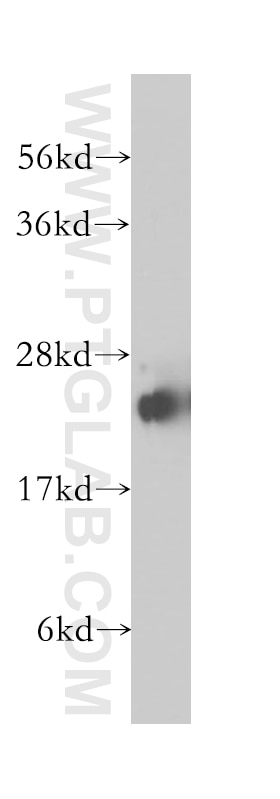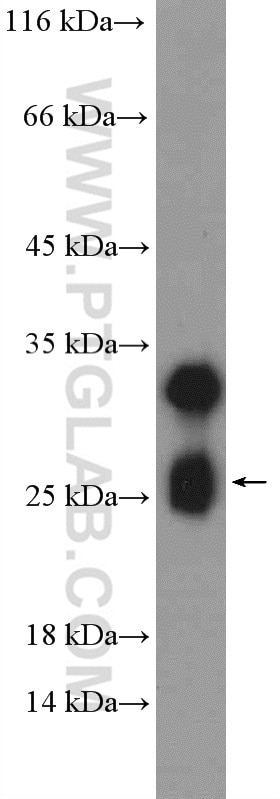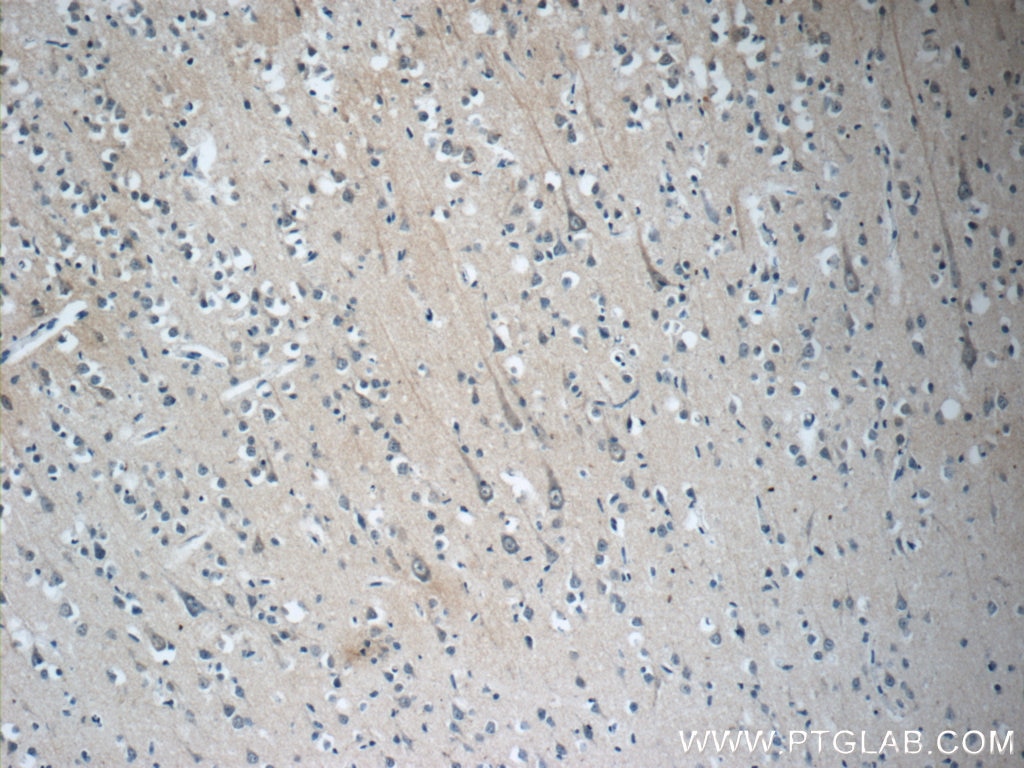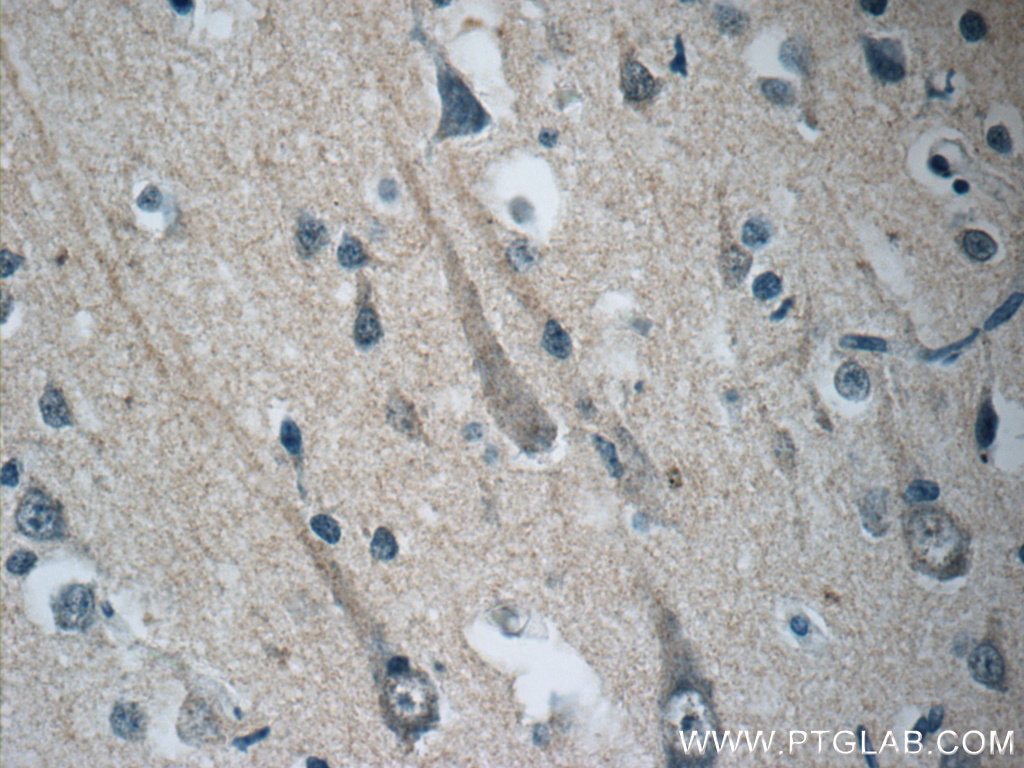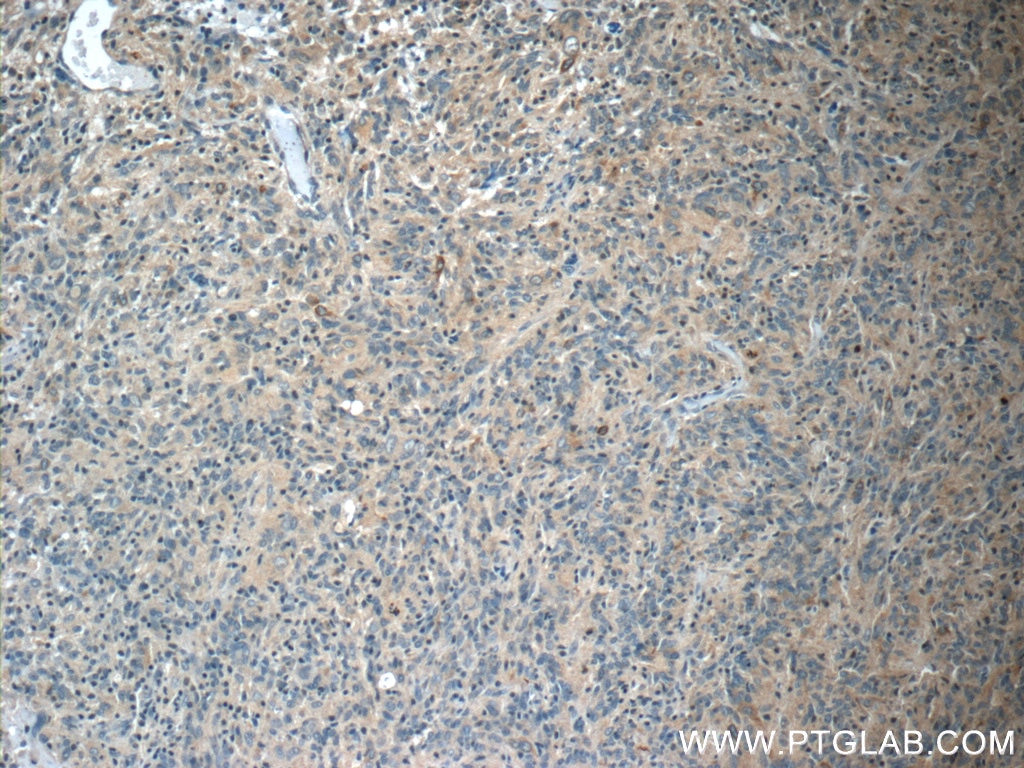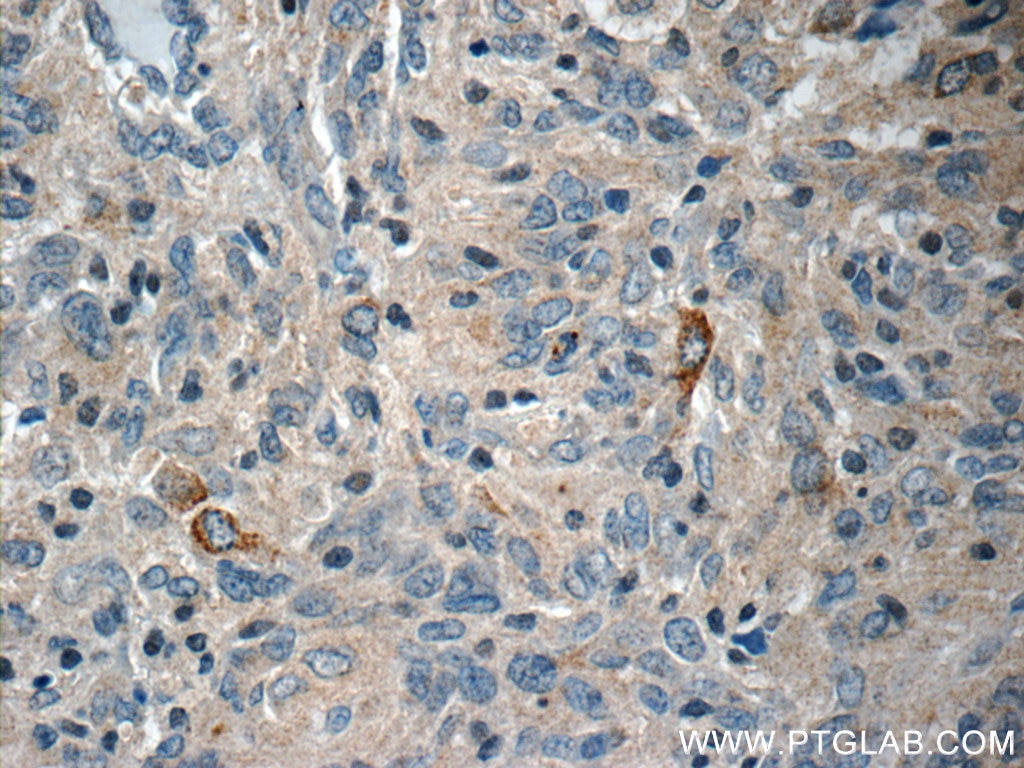STMN4 Polyklonaler Antikörper
STMN4 Polyklonal Antikörper für WB, IP, IHC, ELISA
Wirt / Isotyp
Kaninchen / IgG
Getestete Reaktivität
human, Maus, Ratte
Anwendung
WB, IHC, IF, IP, ELISA
Konjugation
Unkonjugiert
Kat-Nr. : 12027-1-AP
Synonyme
Geprüfte Anwendungen
| Erfolgreiche Detektion in WB | humanes Hirngewebe, Rattenhirngewebe |
| Erfolgreiche IP | Maushirngewebe |
| Erfolgreiche Detektion in IHC | humanes Gliomgewebe, humanes Hirngewebe Hinweis: Antigendemaskierung mit TE-Puffer pH 9,0 empfohlen. (*) Wahlweise kann die Antigendemaskierung auch mit Citratpuffer pH 6,0 erfolgen. |
Empfohlene Verdünnung
| Anwendung | Verdünnung |
|---|---|
| Western Blot (WB) | WB : 1:1000-1:4000 |
| Immunpräzipitation (IP) | IP : 0.5-4.0 ug for 1.0-3.0 mg of total protein lysate |
| Immunhistochemie (IHC) | IHC : 1:50-1:500 |
| It is recommended that this reagent should be titrated in each testing system to obtain optimal results. | |
| Sample-dependent, check data in validation data gallery | |
Veröffentlichte Anwendungen
| WB | See 3 publications below |
| IF | See 2 publications below |
Produktinformation
12027-1-AP bindet in WB, IHC, IF, IP, ELISA STMN4 und zeigt Reaktivität mit human, Maus, Ratten
| Getestete Reaktivität | human, Maus, Ratte |
| In Publikationen genannte Reaktivität | human, Maus |
| Wirt / Isotyp | Kaninchen / IgG |
| Klonalität | Polyklonal |
| Typ | Antikörper |
| Immunogen | STMN4 fusion protein Ag2657 |
| Vollständiger Name | stathmin-like 4 |
| Berechnetes Molekulargewicht | 216 aa, 25 kDa |
| Beobachtetes Molekulargewicht | 22-30 kDa |
| GenBank-Zugangsnummer | BC011520 |
| Gene symbol | STMN4 |
| Gene ID (NCBI) | 81551 |
| Konjugation | Unkonjugiert |
| Form | Liquid |
| Reinigungsmethode | Antigen-Affinitätsreinigung |
| Lagerungspuffer | PBS with 0.02% sodium azide and 50% glycerol |
| Lagerungsbedingungen | Bei -20°C lagern. Nach dem Versand ein Jahr lang stabil Aliquotieren ist bei -20oC Lagerung nicht notwendig. 20ul Größen enthalten 0,1% BSA. |
Hintergrundinformationen
RB3 (Stathmin-4), encoded by STMN4 gene, is a neuron-specific homologue of the SCG10/stathmin family proteins, possessing a unique N-terminal membrane-associated domain and the stathmin-like domain at the C terminus, which promotes microtubule (MT) catastrophe and/or tubulin sequestering. Stathmin is a ubiquitous cytosolic phosphoprotein, preferentially expressed in the nervous system, and described as a relay integrating diverse intracellular signaling pathways. RB3 is consistently up-regulated in differentiated neuroblastoma cells, and stable expression of transfected RB3 could induce differentiation, suggesting a role of RB3 during neuroblastoma differentiation. Moreover, increased RB3 is a unique response protein in the stathmin-related proteins following optical nerve axotomy and RB3 may be a critical target for neurodegenerative diseases. STMN4 has 4 isoforms with MW 25, 23, 22 and 19 kDa (refer to UniProt). Another 30 kDa isoform can be found by NCBI Protein Blast. (https://www.ncbi.nlm.nih.gov/protein/XP_005273709)
Protokolle
| PRODUKTSPEZIFISCHE PROTOKOLLE | |
|---|---|
| WB protocol for STMN4 antibody 12027-1-AP | Protokoll herunterladen |
| IHC protocol for STMN4 antibody 12027-1-AP | Protokoll herunterladenl |
| IP protocol for STMN4 antibody 12027-1-AP | Protokoll herunterladen |
| STANDARD-PROTOKOLLE | |
|---|---|
| Klicken Sie hier, um unsere Standardprotokolle anzuzeigen |
Publikationen
| Species | Application | Title |
|---|---|---|
Cell Rep Loss of Stathmin-2, a hallmark of TDP-43-associated ALS, causes motor neuropathy. | ||
Genome Med Spatial transcriptomic analysis of Sonic hedgehog medulloblastoma identifies that the loss of heterogeneity and promotion of differentiation underlies the response to CDK4/6 inhibition | ||
Elife Translatome analysis reveals cellular network in DLK-dependent hippocampal glutamatergic neuron degeneration |
